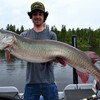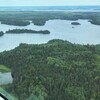
Sweeping the Basin For Crappies

Oh, my, you have to love autumn in Northern Ontario because there is a never-ending list of exciting things to do in such splendid surroundings.
In just the last four days, for example, I've gone grouse hunting with my grandson, spent time with him in the bear blind, set up some new deer stands, gone puddle jump shooting for ducks and geese, caught smallmouth bass and walleyes, and swept the basin clean for crappies.
I get tired just thinking about it all, but it highlights the fact that when fall rolls around, there aren't enough hours in a typical Northern Ontario day.
And I wouldn't have it any other way.
Speaking about crappies, they are one of my much-loved fish and the month of October is without question my favourite time of the year to catch them.
I got onto an amazing pattern the other day, something I've been refining for several years now, and it was out-of-this-world good. So spectacular, in fact, that had we been fishing together, I wouldn't have let you pinch me, because if this was a dream, I didn't want to wake up.
I call it sweeping the basin, and I guarantee the tactic will work for you wherever you fish for plate-size slabs in the northern part of the province.
What I did after launching the boat on one of my favourite Sunset Country lakes was to slowly motor around while I monitored my sonar unit and looked for fish. A big mistake many anglers make is arriving at the lake or river so excited at the prospect of fishing that they drop down their lines before they've found anything to catch. Resist the urge to do it and spend more time early in the day searching for fish.

Once I found them, as I suspected and is usually the case in the early to mid-autumn period, the crappies were spread out along the bottom, hanging a foot or two above it, loosely bunched up. In a couple of more weeks, they will drop down closer to the basin and congregate in much denser schools, but right now, they are still strung out in loosey-goosey pods.
So, parking your boat over top of the fish and presenting a vertical bait or lure to them is much less productive than trolling.
But there was a catch, or a detail, that mattered immensely. While the crappies definitely wanted my bait to be swimming, they didn't want it to be moving quickly. In fact, they were so particular about only hitting it at the proper speed that I was reminded of Muhammad Ali when he was asked how he was going to beat Sonny Liston. The champ replied that he was going to...float like a butterfly, and sting like a bee!
Thank you, Mohammad, because that is exactly how the crappies wanted me to present the jig!

I should mention, too, that I was using a short-shanked 1/16th-ounce blue and white Reel Bait Flasher jig with a tiny willowleaf blade beneath the head and a 3-inch soft plastic minnow pinned to the hook.
If I dropped the combination straight down over the side of the boat, in front of a crappies' nose, I couldn't get the fish to bump it. But if I floated it like a butterfly, I'd sting it like a bee.
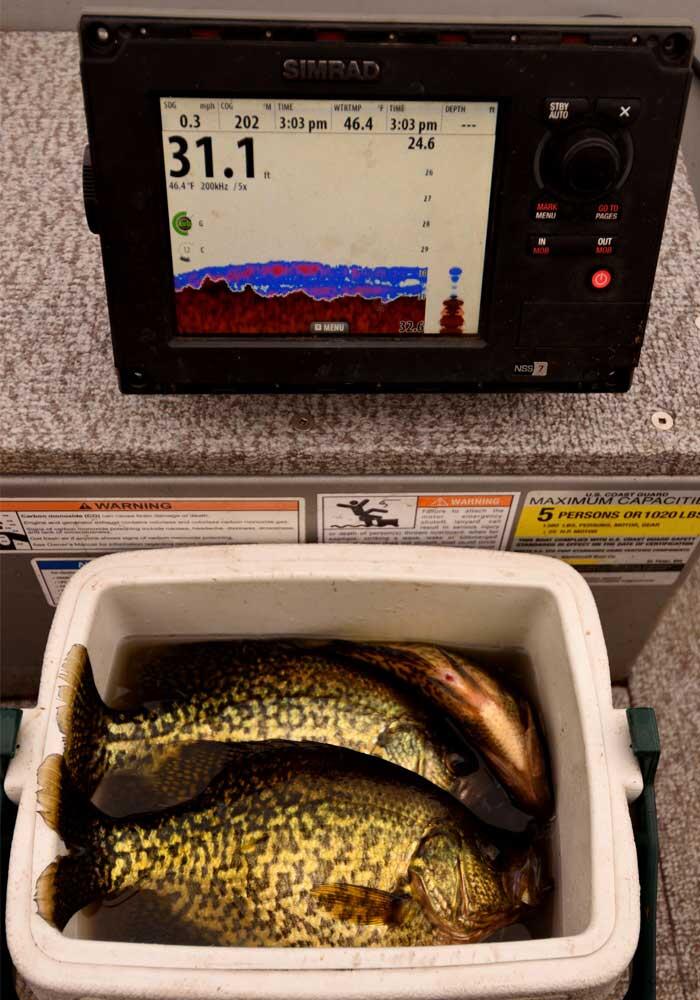
What I did, in fact, every time I spotted a strung-out school of crappies was to pop my 20 HP Mercury outboard into reverse and backtroll at the slowest possible speed. Then, as soon as I noticed on the sonar screen that I was moving at .8 miles an hour, I'd pop the motor into neutral and let the boat come to a complete stop.
Visualizing what was happening, I am certain that as I slowly backtrolled into the wind, my jig was pulled up off the bottom, well above the fish. But then, when I popped the motor into neutral, with the lure at its apex, it floated like a butterfly back down to the bottom. And that is when every single crappie ate the bait.
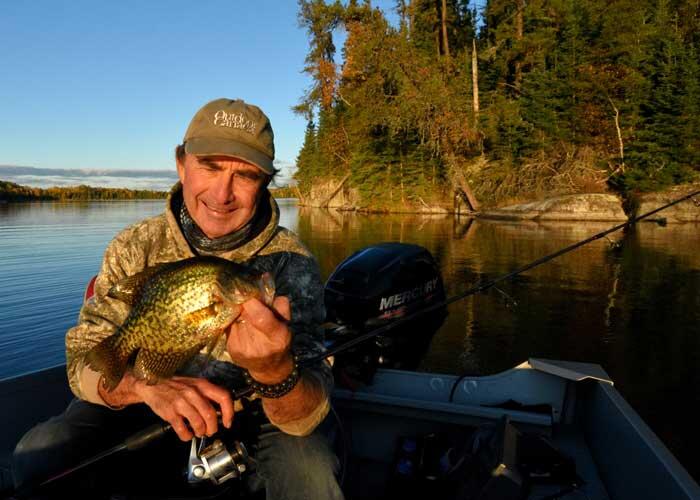
In fact, if it wasn't floating precisely this way -- think how you'd sweep the kitchen floor with a broom -- the crappies wouldn't touch it. But as soon as I slowly pulled it away from them, they'd watch it drift up. And then, when I stopped the boat and allowed the jig to float back down, in an arc, like a butterfly, it was lights out, game on, hand-to-hand combat.
Lord, I wish there were more than 24 hours on a typical Northern Ontario autumn day.
Recommended Articles

Eating Northern Pike

10 Facts About Lake of the Woods

Winter Fish Scents

Crawford’s Diamond in the Rough

Fly Fishing The Nipigon River: What To Bring

The Tigers of Sunset Country

Top 5 Baits for Smallmouth and Largemouth Bass

Learn to Be Slow in a Hurry

Predicting Lake Thickness

Shoreline Strategies
Ontario Brook Trout

Casting for Coasters

Lakers of Lower Manitou: Fishing Just North of the U.S. Border
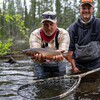
In Search of Brookies
Top 5 Musky Destinations in Ontario
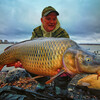
World Class Carp
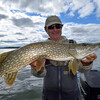
Don't Forget The Umbrella

Beaded Lures
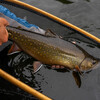
Adventures on the Nipigon River
